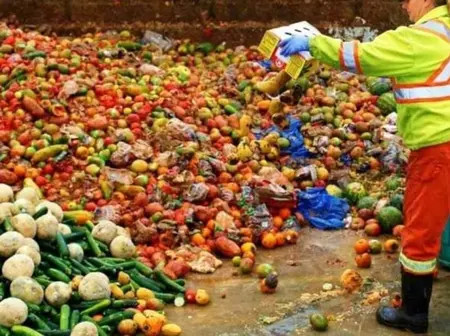Last Updated on 1 minute by Agencies for Kenya Online News
Nairobi, Kenya, September 10, 2025 — Kenya loses up to 40% of the food it produces each year—around 9 million tons of food worth KES 72 billion (approximately US$578 million)—even as one in four citizens struggles daily to find enough to eat.
This is enough to fill approximately 500 million 18-ton trucks, according to a new report by World Resources Institute (WRI) Africa.
The study, Food Loss and Waste in Maize, Potato, Fresh Fruits, and Fish Value Chains in Kenya 2025, offers the most comprehensive analysis to date. It maps the scale, the hotspots and drivers of food loss and food waste, while outlining solutions that could improve food security, farmer livelihoods, and climate resilience.
Major Losses Across Staple and High-Value Foods
Kenya loses up to 36% of maize (20-36), up to 56% of fresh fruits (17−56 percent mango, followed by avocado (15−35 percent) and banana (7−11 percent), 23% of potatoes, and 34% of fish before they reach consumers, fuelling food shortages, undermining farmer livelihoods, and straining natural resources.
The Report highlights a significant data gap in food loss and waste in Kenya, underscoring the urgent need for standardized measurement systems. Without reliable data, it is impossible to set meaningful targets, design effective interventions, or accurately track progress.
What the Study Means for Kenyans
For ordinary Kenyans, food loss and waste may seem like a distant issue – largely due to limited awareness of its scale and impact. Yet, its consequences are deeply felt across society. For the government, losses of staples like maize in storage undermine efforts to ensure national security. For businesses, losses arising from inefficient supply chains mean reduced profits and lost opportunities. For smallholder farmers, food losses directly affect yields, incomes, and sometimes daily survival.
Additionally, for consumers, reducing food losses can lead to more affordable maize
flour, fresher fruits and fish in local markets, and more income remaining in the hands of farmers. It also eases pressure on land and water, helps stabilize prices, and builds resilience against climate shocks.
Urgent Call for Action on food loss and waste in Kenya
If Kenya reduces food loss and waste FLW by 50% by 2030, it could feed more than 7 million people annually, inject KES 36 billion back into the economy, and cut over 7 million tonnes of carbon emissions—directly supporting its climate commitments.
The challenge
Globally, the world is off track to meet the SDG 12.3 target of halving food waste and reducing food loss by 2030. Kenya has pledged to act but faces significant challenges: weak monitoring systems, insufficient financing, and fragmented coordination.
The 2024 Kenya Post-Harvest Management on FLW Reduction Strategy (2024– 2028) marks an important step, yet delays in coordination, gaps in measurement, and lack of incentives remain barriers. While some counties are beginning to domesticate the strategy, localizing the strategy with action plans, stronger national momentum is still needed.
Solutions: A three-pronged approach
The report recommends a three-pronged approach to address the food loss and waste problem:
(i) Enhanced data and monitoring: Build robust systems to identify where the losses are happening to target actions,
(ii) Scaling proven technologies and innovations: Expand the use of solutions such as hermetic storage, cold chains, farmer training, and food donation programs.
(iii) Enhanced policy implementation and stronger value chain coordination: Accelerate the rollout of national and county-level strategies, improve coordination across sectors, and create incentives for action.
“WRI Africa is tackling this challenge head-on through the ‘Target-Measure-Act’ approach and partnerships with government, business, and development actors,” said Dr. Susan Chomba, Director, Vital Landscapes. “By providing reliable data, strengthening policies, mobilizing finance, and fostering entrepreneurship, we are turning food loss and waste into food security, green jobs, and climate resilience across Kenya and the region.”
Opportunity
With just five years left to deliver on SDG 12.3, turning commitments into results is urgent. By investing in consistent, high-quality data, scaling proven technologies and enforcing clear policies and actions – including food recovery and redistribution – Kenya can turn the tide on food loss and waste reduction, earning the triple dividend of saving money, feeding more people, and reducing emissions. Acting now could feed millions, save billions, and cut emissions—unlocking a win for people, nature, and climate. But this requires bold coordinated action.

Leave a Reply